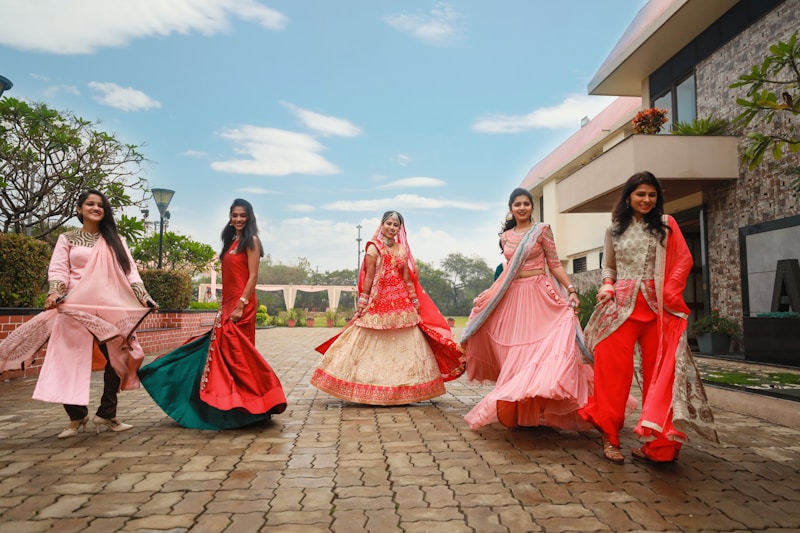Exploring Traditional Music and Dances for Weddings: A Cultural Celebration
Weddings are not just a unification of two individuals; they are a celebration of culture, family, and tradition. One of the most significant aspects of weddings across different cultures is the incorporation of traditional music and dances. This article delves into the fascinating world of traditional music and dances for weddings, showcasing how these elements can enrich the wedding experience.
The Importance of Traditional Music and Dances
Traditional music and dances play a crucial role in wedding ceremonies. They reflect the heritage and values of the couple's families and create a vibrant atmosphere for guests. These performances often invoke emotions, telling stories of love, joy, and togetherness that have been passed down through generations.
Reasons Couples Choose Traditional Music and Dances
| Reasons | Description |
| Heritage | Honoring familial and cultural heritage. |
| Atmosphere | Creating a lively and joyful atmosphere during the celebration. |
| Unity | Bringing families and guests together through shared cultural experiences. |
| Uniqueness | Providing a unique and memorable experience for wedding guests. |
Exploring Cultural Variations
Different cultures around the world present unique traditional music and dance forms that are typically performed at weddings. Here are some examples:
1. Indian Weddings
In Indian weddings, music and dance are integral components of the celebrations. The Sangeet night is dedicated to music and dance performances, where families come together to sing and dance. Traditional forms such as Bhangra and Garba are popular, and they embody the joy and vibrancy of Indian culture.

2. African Weddings
African weddings often include traditional dances that vary by region. For instance, the Adumu dance, performed by the Maasai people, involves jumping and is a display of strength and joy. Drumming is also a key feature, with rhythmic beats that encourage all guests to join in the celebration.
3. Latin American Weddings
Latin American weddings are renowned for their festive atmosphere. Traditional dances such as the Salsa and Merengue are not just performances but an invitation for all everyone to the dance floor. Music is lively and often features mariachi bands that infuse energy and joy into the ceremony.
4. European Weddings
In Europe, different countries have varied traditions. For instance, in Irish weddings, the Céilí dance is commonly performed, bringing guests together in a shared dance experience. In contrast, Greek weddings feature the Sirtaki, often seen in films, which encourages everyone to join in a communal dance.
Incorporating Traditional Music and Dances into Your Wedding
If you are planning a wedding and want to incorporate traditional music and dances, consider the following steps:
1. Identify Your Cultural Background
Understanding your heritage is paramount. Discuss with family members to gather insights on the traditional practices that should be featured.
2. Hire Live Performers
Consider hiring live musicians and dancers who specialize in traditional performances. This will enhance authenticity and provide an engaging atmosphere for your guests.
3. Create a Playlist
If live performances are not feasible, curate a playlist of traditional songs that reflect your culture. Play these during key moments of the wedding to keep the cultural essence alive.
4. Provide Instructions for Guests
If certain dances require participation, consider offering a brief instruction session before the dance starts. This encourages guests to join in and feel included.
Common Questions About Traditional Music and Dances for Weddings
As couples explore traditional music and dances for their weddings, several questions arise:
- What if my partner comes from a different cultural background? - Combining traditions can create a beautiful fusion that celebrates both cultures.
- How do I select the right dances for our wedding theme? - Choose dances that resonate with your emotional connection and the overall vibe you want to create.
- Is it costly to hire traditional performers? - Costs may vary based on location and availability. It’s best to shop around and get quotes from multiple performers.
- Can I incorporate traditional elements into a modern venue? - Absolutely! Mixing traditional music and dances with modern aesthetics can create a unique ambiance that reflects your style.
Conclusion: A Celebration of Love Through Music and Dance
Traditional music and dances for weddings echo the richness of cultural heritage, bringing people together in joyful celebration. Whether you opt for the vibrant Bhangra of an Indian Sangeet or the soulful rhythms of African drumming, these elements will contribute to creating a memorable experience for you and your guests. Remember to honor your cultural heritage while also being open to incorporating diverse traditions that unite families and friends in joyous celebration. Make sure to plan ahead, hire the right performers, and communicate with your guests to ensure everyone feels included in this celebratory union of love.
Embrace tradition while creating new memories. Your wedding will not only be a celebration of love but also a testament to the beauty of cultural diversity.